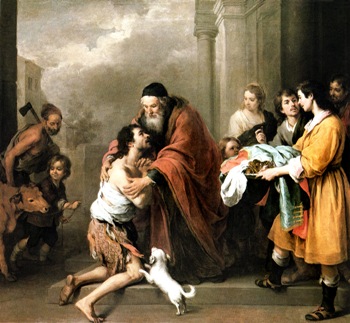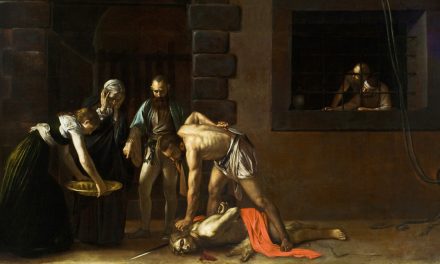 In Defense of the Sacraments of Service – Marriage and Holy Orders
In Defense of the Sacraments of Service – Marriage and Holy Orders
Last week, we looked at the teaching of the Church on Christian Vocation and answered common objections to its teachings of marriage. This week, our focus is on Holy Orders.
Common Objections Concerning Holy Orders
Objection to Holy Orders #1: There is no need for priesthood. Jesus is the one mediator between God and man. And His sacrifice was given once for all – no more sacrifice… no need for priests.
Reply to Objection: Jesus is indeed the one mediator between God and man. Without Jesus, there is no redemption and no salvation. Without Jesus, that which separated God and man would not have been bridged. His role as the one mediator is not diminished by the priesthood, it is served. The Gospels and New Testament letters are filled with examples of Jesus selecting others to serve his mission in His place during His time on earth and to carry on that mission after His Ascension. He chose the Twelve and He sent out the Seventy-Two. The Acts of the Apostles selected a man to replace Judas among the Twelve. Seven men were chosen to be the first deacons. The New Testament shows the early Church already with bishops, priests and deacons continuing His mission. (cf. Acts 6:56; 1 Timothy 3; 1 Peter 5)
Regarding sacrifice, Jesus instituted the priesthood and the Sacrifice of the Mass in the setting of the Passover at the Last Supper on Holy Thursday. His one Sacrifice on Calvary was to be made present in our time in the Sacrifice of Thanksgiving that is called the Eucharist where we are both mystically present at Calvary and at the Heavenly Liturgy. His priests represent Him in His person at these liturgies. The Eucharistic Sacrifice at Holy Mass is not a new sacrifice, it is the Sacrifice of Calvary made present in an unbloody manner.
“For I received from the Lord what I also handed on to you, that the Lord Jesus, on the night he was handed over, took bread, and, after he had given thanks, broke it and said, ‘This is my body that is for you. Do this in remembrance of me.’ In the same way also the cup, after supper, saying, ‘This cup is the new covenant in my blood. Do this, as often as you drink it, in remembrance of me.’ For as often as you eat this bread and drink the cup, you proclaim the death of the Lord until he comes. Therefore whoever eats the bread or drinks the cup of the Lord unworthily will have to answer for the body and blood of the Lord. A person should examine himself, and so eat the bread and drink the cup. For anyone who eats and drinks without discerning the body, eats and drinks judgment on himself.” (1 Corinthians 11:23-29)
“As early as the second century we have the witness of St. Justin Martyr for the basic lines of the order of the Eucharistic celebration. They have stayed the same until our own day for all the great liturgical families. St. Justin wrote to the pagan emperor Antoninus Pius (138-161) around the year 155, explaining what Christians did:”(CCC 1345)
On the day we call the day of the sun, all who dwell in the city or country gather in the same place.
The memoirs of the apostles and the writings of the prophets are read, as much as time permits.
When the reader has finished, he who presides over those gathered admonishes and challenges them to imitate these beautiful things.
Then we all rise together and offer prayers* for ourselves . . .and for all others, wherever they may be, so that we may be found righteous by our life and actions, and faithful to the commandments, so as to obtain eternal salvation.
When the prayers are concluded we exchange the kiss.
Then someone brings bread and a cup of water and wine mixed together to him who presides over the brethren.
He takes them and offers praise and glory to the Father of the universe, through the name of the Son and of the Holy Spirit and for a considerable time he gives thanks (in Greek: eucharistian) that we have been judged worthy of these gifts.
When he has concluded the prayers and thanksgivings, all present give voice to an acclamation by saying: ‘Amen.’
When he who presides has given thanks and the people have responded, those whom we call deacons give to those present the “eucharisted” bread, wine and water and take them to those who are absent.
Objection to Holy Orders #2: It is not right that only men are ordained. Women should also have a right to be priests. Besides, there used to be women deacons, right?
Reply to Objection: First, no one, man or woman, has a right to be a priest. This is not a question of rights. It is a matter of roles, teaching and example.
“[The Catholic Church] holds that it is not admissible to ordain women to the priesthood, for very fundamental reasons. These reasons include: the example recorded in the Sacred Scriptures of Christ choosing his Apostles only from among men; the constant practice of the Church, which has imitated Christ in choosing only men; and her living teaching authority which has consistently held that the exclusion of women from the priesthood is in accordance with God’s plan for his Church.” (Pope Paul VI, 1975)
This does not deny the critical role of women in the Church, but it does assert that the Church has no authority to ordain women. Pope John Paul II wrote in Ordinatio Sacerdotalis, “I declare that the Church has no authority whatsoever to confer priestly ordination on women and that this judgment is to be definitively held by all the Church’s faithful.” He further wrote in that same document:
“The presence and the role of women in the life and mission of the Church, although not linked to the ministerial priesthood, remain absolutely necessary and irreplaceable. As the Declaration Inter Insigniores points out, ‘the Church desires that Christian women should become fully aware of the greatness of their mission: today their role is of capital importance both for the renewal and humanization of society and for the rediscovery by believers of the true face of the Church.’
“The New Testament and the whole history of the Church give ample evidence of the presence in the Church of women, true disciples, witnesses to Christ in the family and in society, as well as in total consecration to the service of God and of the Gospel. ‘By defending the dignity of women and their vocation, the Church has shown honor and gratitude for those women who-faithful to the Gospel-have shared in every age in the apostolic mission of the whole People of God. They are the holy martyrs, virgins and mothers of families, who bravely bore witness to their faith and passed on the Church’s faith and tradition by bringing up their children in the spirit of the Gospel.’” (Pope John Paul II; Ordinatio Sacerdotalis; 1994)
Some of the greatest saints in the history of the Church were women. Among of the greatest Doctors of the Church with expertise in the spiritual life were St. Teresa of Avila, St. Catherine of Sienna and St. Thérèse of Lisieux. The greatest saint of them all is the Blessed Virgin Mary.
In this age of equality, we forget the complementarity of different roles. Jesus and his apostles chose various women for important roles while on earth, but none of them were chosen to be deacons, priests or bishops.
In regard to women deacons, the office of deacon derives its name from the Greek word for servant/service. While it is the case that the New Testament refers to many as servants, it also provides the requirements for those who would be admitted to the ordained office of deacon… “men of dignity, husbands of one wife.” (cf. 1 Timothy 3)
Objection to Holy Orders #3: Why can’t priests be married? Wouldn’t a married priesthood reduce the problem of sexual abuse and priest shortage?
Reply to Objection: First, the rule that requires priests to be unmarried is a discipline of the Church, not a doctrine. It could be changed. Second, the rule is not universal. In the Eastern Rites of the Catholic Church, it is more of the norm that priests are married. And even in the Roman Rite in the Western Church, there are exceptions. But, it is a discipline that serves the needs of the priesthood and the laity well. Jesus speaks of the good of the celibate life:
“(His) disciples said to him, ‘If that is the case of a man with his wife, it is better not to marry.’ He answered, ‘Not all can accept (this) word, but only those to whom that is granted. Some are incapable of marriage because they were born so; some, because they were made so by others; some, because they have renounced marriage for the sake of the kingdom of heaven. Whoever can accept this ought to accept it.’” (Matthew 19:10-12)
The fact of the matter is that a priest in the Roman Rite of the Catholic Church is at a severe disadvantage today if he is married. Speaking as a married deacon, I can testify to the hardships my unpredictable ministry imposes on my marriage. Without an extremely strong marriage, a deacon in the Church of the West would in trouble. And the demands on a priest are far and away more difficult than those on a deacon. Further, St. Paul, writing to the Corinthians, not about priestly celibacy specifically, but on celibacy in general, seems to prefer it:
“An unmarried man is anxious about the things of the Lord, how he may please the Lord. But a married man is anxious about the things of the world, how he may please his wife, and he is divided. An unmarried woman or a virgin is anxious about the things of the Lord, so that she may be holy in both body and spirit. A married woman, on the other hand, is anxious about the things of the world, how she may please her husband.” (1 Corinthians 7:32-34)
Regarding the priest shortage, what is needed is holier families from which vocations arise and more effective witness to the dignity and value of the priesthood from the greater church community and priests themselves. When the priesthood is valued more greatly by families and lived more holy by priests, we will see an improvement. Remember, even the married clergy of non-Catholic churches have experienced a shortage.
Regarding sexual abuse, the vast majority of Catholic priests have not abused children. In fact, studies show that celibate males are no more prone to commit sexual abuse of juveniles than are married males. The abuse crisis may be more visible in the media coverage of Catholic clergy, but married clergy in other religions have also abused children.
Again, the problem is one of holiness, not marital status. There is no causal relationship relationship demonstrated between being Catholic or celibate and child abuse. Thus, a married priesthood would not be a remedy.
Into the deep…
Deacon Mike Bickerstaff, Editor-in-Chief for The Integrated Catholic Life™, is the Director of Adult Education and Evangelization at his parish and a deacon of the Roman Rite for the Archdiocese of Atlanta.
Please help us in our mission to assist readers to integrate their Catholic faith, family and work. Tell your family and friends about this article using both the Share and Recommend buttons below and via email. We value your comments and encourage you to leave your thoughts below. Thank you! – The Editors












